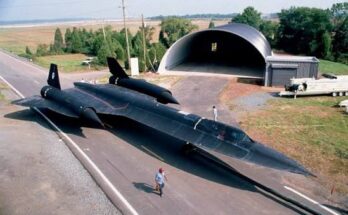
The crash of the F-117 Nighthawk stealth fighter at the 1997 airshow in Baltimore, Maryland, remains one of the most dramatic incidents in modern airshow history. The aircraft, renowned for its angular, radar-deflecting design and classified development during the Cold War, was performing in front of thousands of spectators when it suddenly disintegrated mid-flight. Though the pilot ejected safely and there were no fatalities on the ground, the event shocked aviation enthusiasts and the general public alike, raising questions about the reliability of stealth aircraft and the risks of high-performance demonstrations.
The F-117, often nicknamed the “Stealth Fighter,” was developed in secrecy by Lockheed Martin as part of the U.S. Air Force’s Skunk Works program. Introduced in the 1980s, it was one of the first aircraft specifically designed to evade radar detection. It had seen combat during Operation Desert Storm in 1991 and was considered a marvel of modern engineering. However, by the mid-1990s, the aircraft was nearing the end of its frontline operational use, and it had begun making public appearances at airshows across the United States.

On September 14, 1997, during an airshow at the Chesapeake Air Show near Martin State Airport, spectators gathered to watch the F-117 perform a demonstration flight. As the aircraft made a banking turn at low altitude, structural failure occurred, causing the aircraft to break apart in the air. Flames and debris trailed from the aircraft as the pilot, Major Bryan Knight, ejected just in time. His parachute deployed safely, and he landed with only minor injuries. Parts of the aircraft fell into a residential area, causing minor property damage but miraculously no casualties on the ground.
Investigators later determined that the crash was due to the failure of a support structure in the aircraft’s left wing, which had not been properly inspected. The incident highlighted the importance of thorough maintenance, especially for aircraft operating under extreme stress during aerobatic maneuvers. The Air Force quickly grounded other F-117s for inspection and review, leading to modifications in inspection protocols for the fleet.

The 1997 crash served as a reminder that even the most advanced aircraft are not immune to mechanical failure. It also sparked debate about the wisdom of using frontline military aircraft in high-risk public performances. While the spectacle of airshows is a source of inspiration and pride, it also poses unique challenges in ensuring both pilot and public safety.
Today, footage and eyewitness accounts of the F-117 crash are still circulated in aviation circles, studied for both its engineering implications and its dramatic visuals. The pilot, Major Knight, continued his service and is widely respected for his composure and skill during the emergency.


